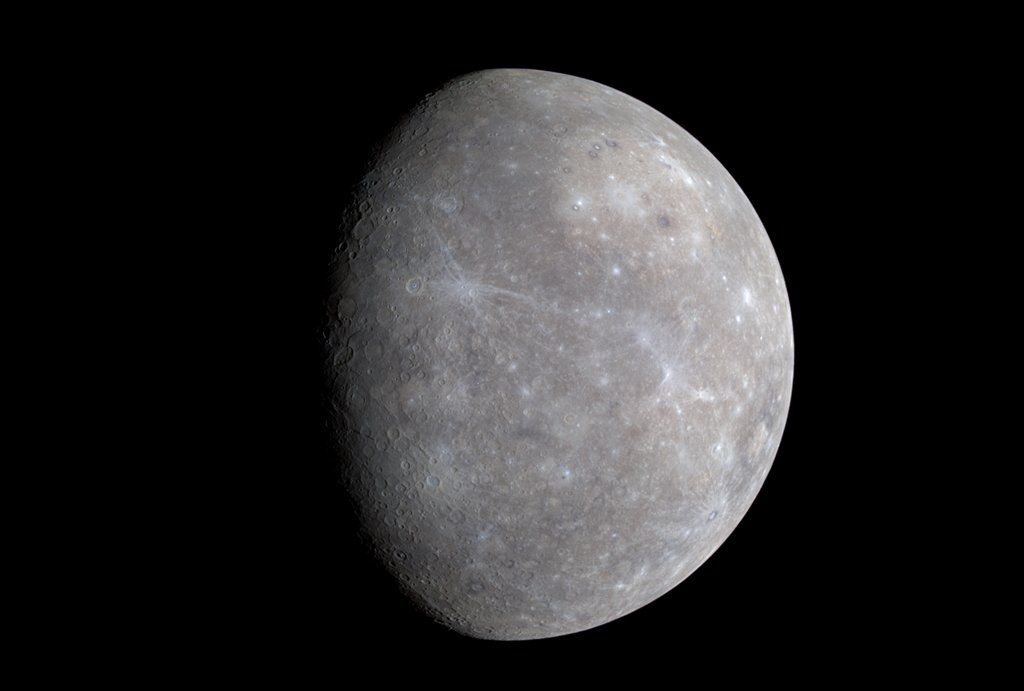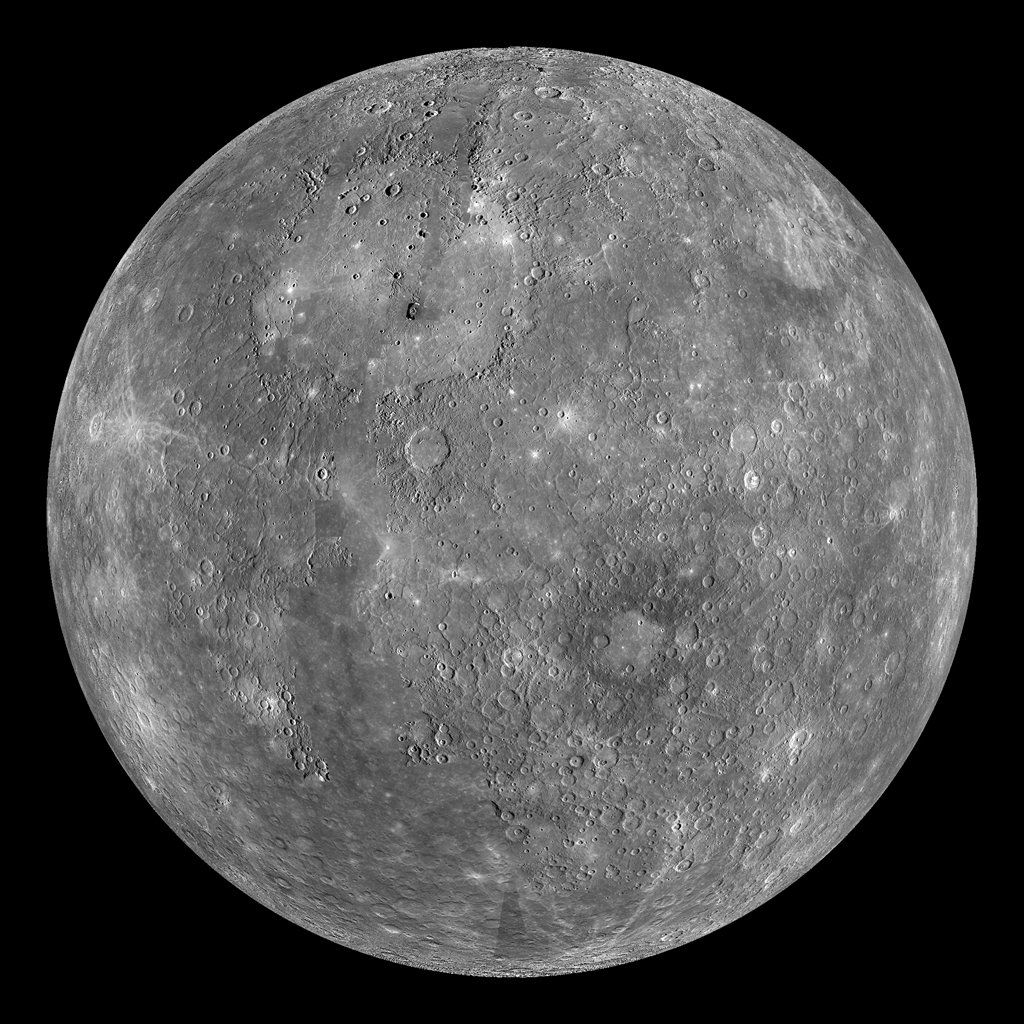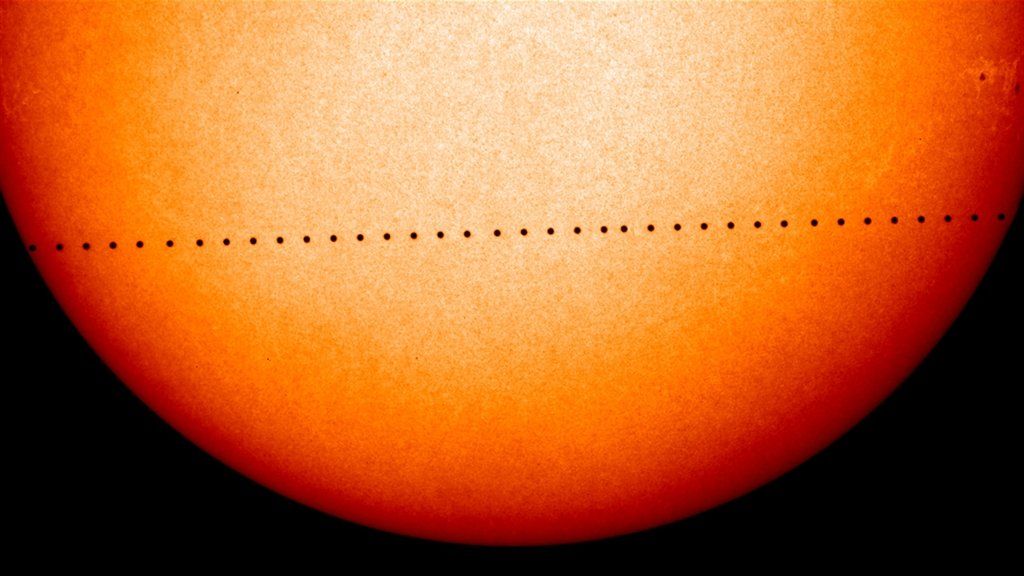This web page is created within BALTICS project funded from the European Union’s Horizon2020 Research and Innovation Programme under grant agreement No.692257.
Mercury
Mercury is the smallest planet in the Solar System and the nearest to the Sun. It is only slightly larger than Earth’s Moon. Jupiter’s moon Ganymede and Saturn’s moon Titan surpass Mercury in size. Mercury’s diameter is about 4,900 kilometres.
This planet was already noticed in the sky by ancient people. Because of its proximity to the Sun, Mercury is visible in the sky either in the east shortly before sunrise or in the west shortly after sunset. When looking at the planet in a telescope, you will be able to see the phases. When Mercury is closer to the Sun, it is rounder. When it is closer to the Earth, a narrower sickle will be observed.
Mercury has a highly elliptical orbit. At its nearest point, or perihelion, it is 46 million kilometres from the Sun, but at its furthest point, or aphelion, it is 70 million kilometres from the Sun. It takes Mercury 88 days to orbit the Sun once. This small planet spins very slowly on its axis and completes one rotation in 59 Earth days. The time from one sunrise to the next, or a solar day, is 176 Earth days.
Mercury has no natural moons. It also has almost no atmosphere, meaning that the temperature fluctuates greatly between day and night. The sunny side reaches temperatures of 430oC, but at night the temperature drops to a chilling -180oC.
The thin and rarefied atmosphere, and also the fact that there have been no geological processes on the planet for a long time, means that Mercury is full of craters. Therefore, the surface of this small planet resembles that of Earth’s Moon. Some craters in Mercury’s polar regions never receive sunlight. Studies show that they contain water ice.
Compared to Earth’s Moon, Mercury has a much larger iron core and a relatively thin crust. It even has its own magnetic field with a strength of about 1% that of the Earth’s.
Because Mercury is so close to the Sun, it is difficult to observe it from Earth. Two space missions, Mariner 10 and MESSENGER, have helped us to learn more about Mercury. Thanks to these missions, a complete map of Mercury’s surface was created, its tiny atmosphere was explored and other secrets of the planet were uncovered.
Mercury’s position relative to the Sun and Earth sometimes makes it possible to observe phenomena such as transit when a planet crosses the Sun’s disk. A transit is not visible to the naked eye. To spot Mercury in the Sun’s bright disk, special filters that reduce the intensity of sunlight have to be used. The transit was first observed in 1631. Mercury crosses Earth’s orbital plane twice a year, in early May and November. If Mercury lies between the Earth and the Sun at this time, a transit can be observed. On average, there are 13 transits every century. Transit contact times are precisely known and can be found in the NASA catalogue.






















